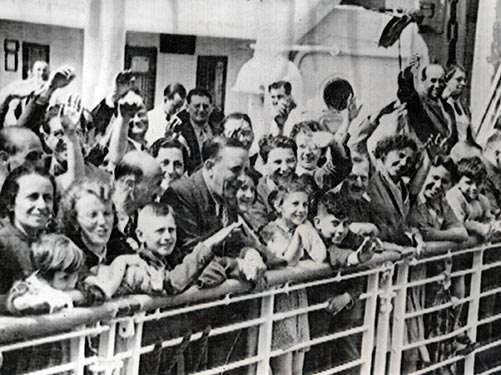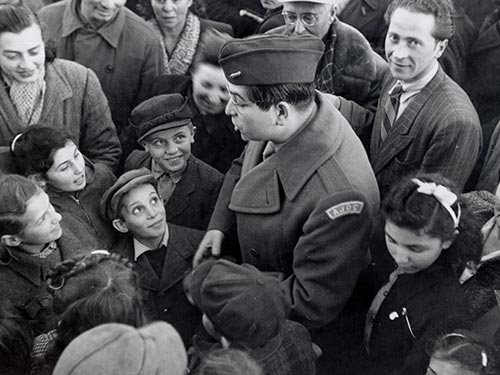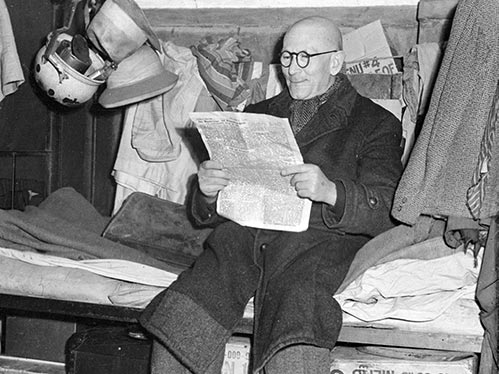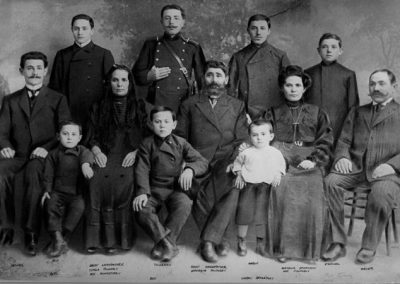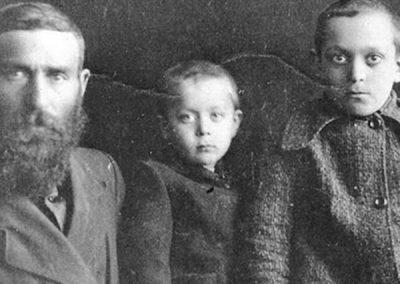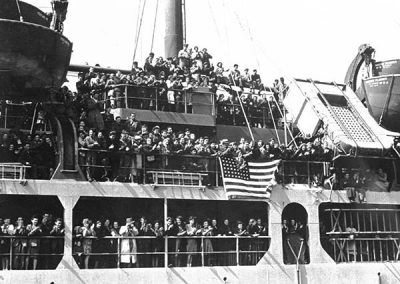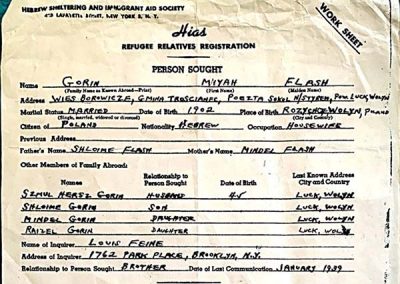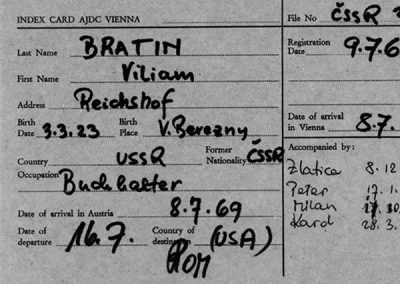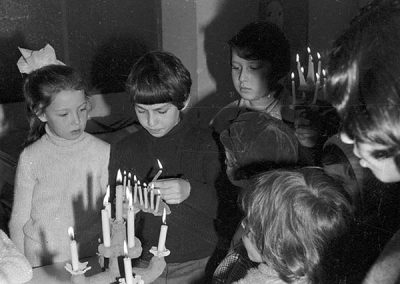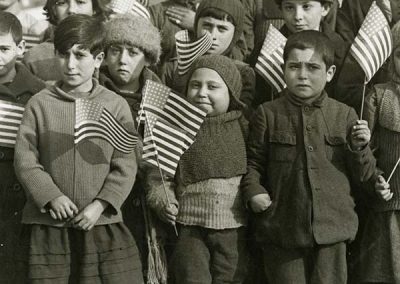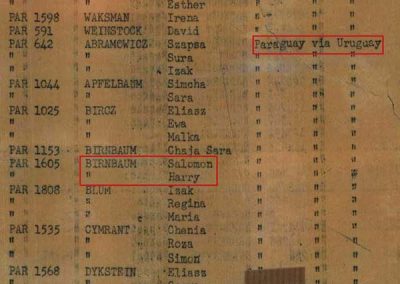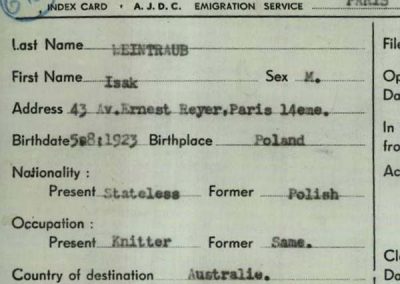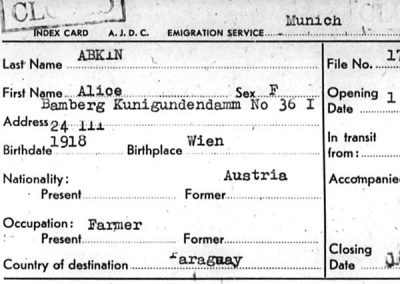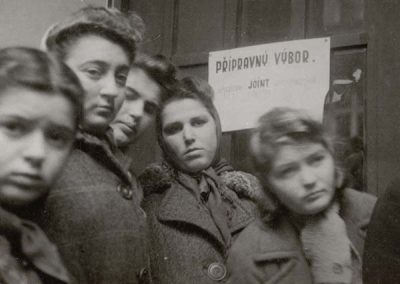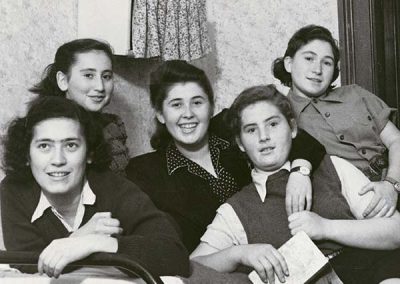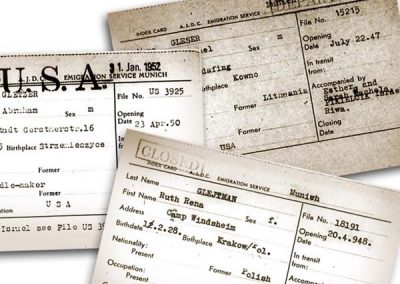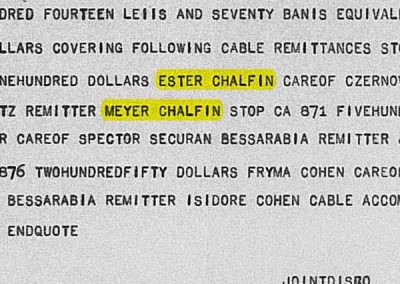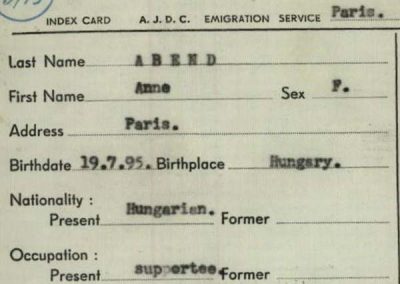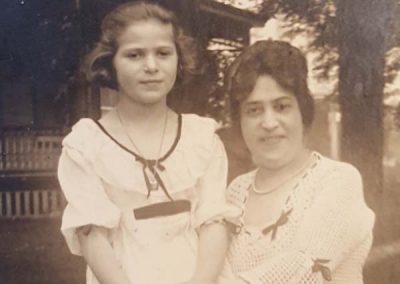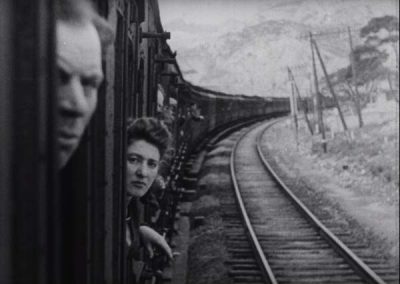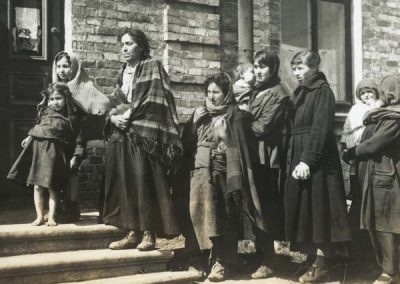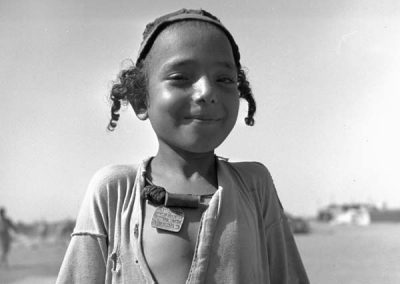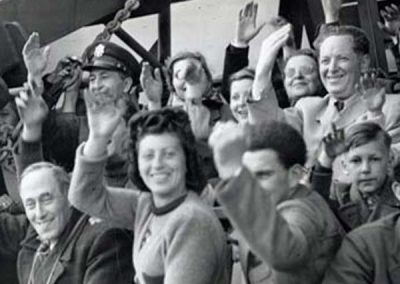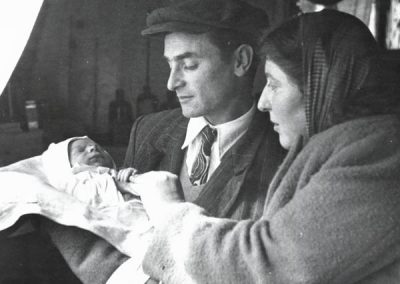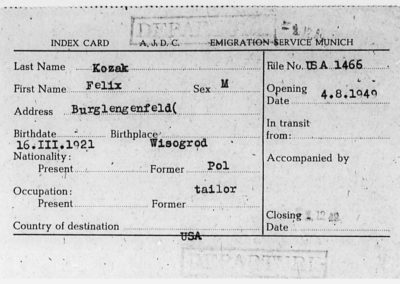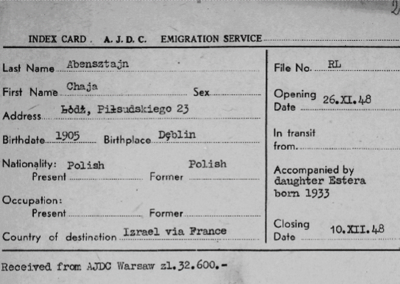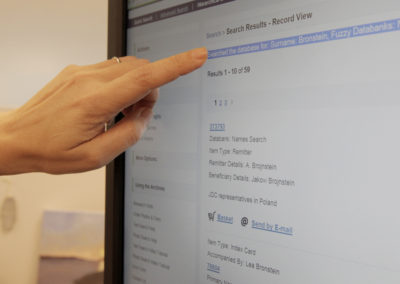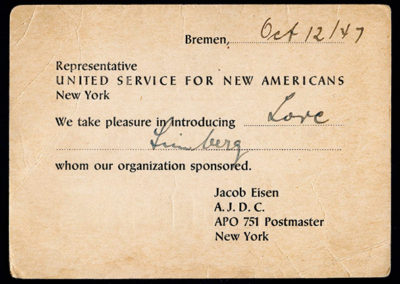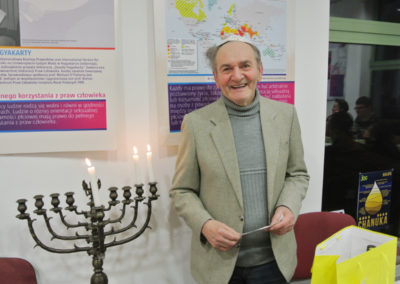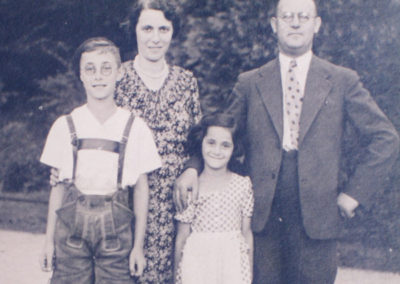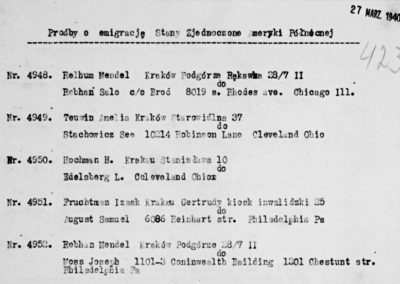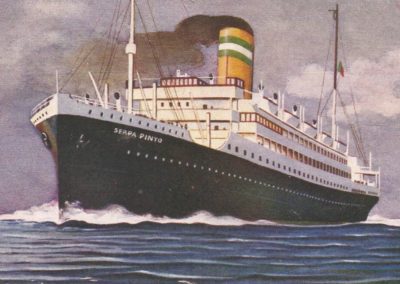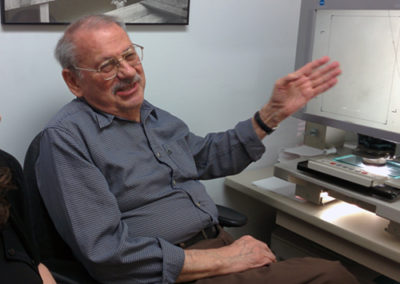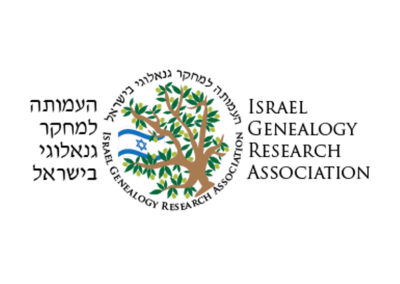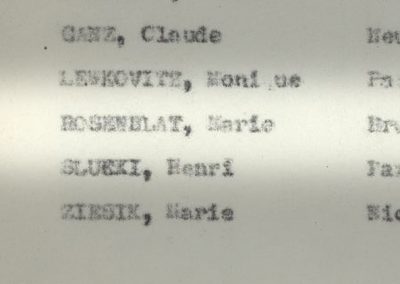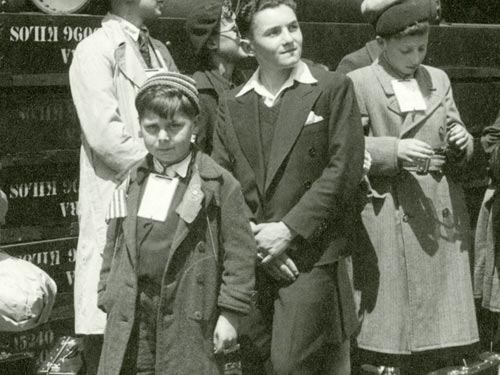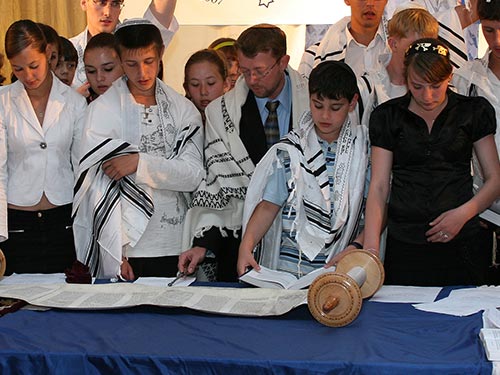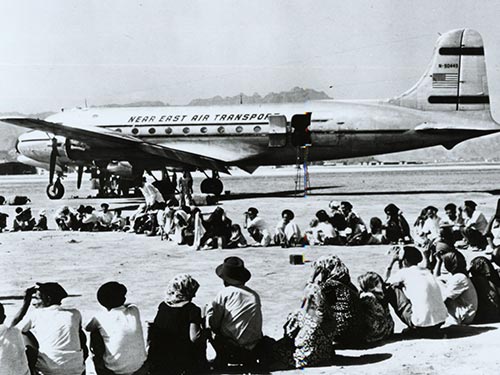Genealogy and Family History
People line up in a JDC transmission office to send funds to family and friends abroad. JDC created a special Transmission Bureau in 1915 as a vehicle through which families in America could transfer funds to their relatives trapped in the war-torn countries.
New York, c.1917.
The text collections of the JDC Archives include lists, remittances, transmigrant files, and registration cards that provide a wealth of valuable information for genealogists and family historians. Many of these documents have been indexed in a Names Database of nearly 600,000 persons who have been assisted by JDC, not only financially but also as recipients of material relief, rescue, and emigration assistance. The lists cover all periods and regions of JDC’s work: World War I-era remittances and postwar assistance; Holocaust and post-Holocaust rescue, relief, and emigration; aliyah to Israel; and aid to refugees and transmigrants in the 1950s-1970s.
In Depth
Lists in the Names Database
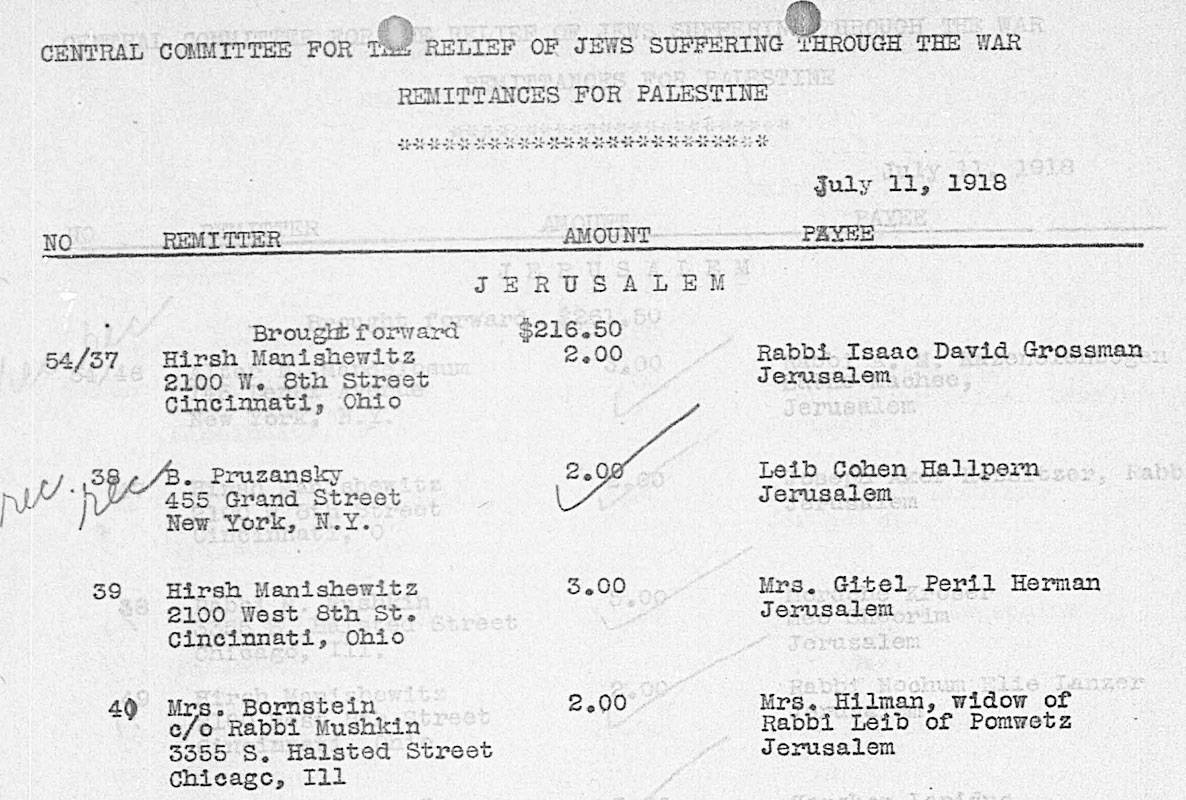
Page from a list of remittances to Palestine
JDC established the Transmission Bureau in 1915 to enable people in the West to remit funds to their relatives overseas in areas where other transmission agencies were unable to function due to war conditions. These lists include the names and addresses of both the remitters and the beneficiaries, prime genealogical information that cannot be found elsewhere.
1918.
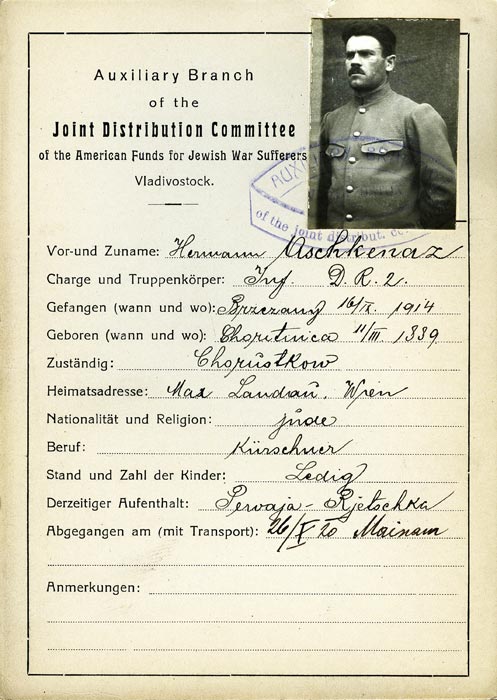
Prisoner of War card for Hermann Aschkenaz
In the aftermath of World War I, 10,000 Jews were among the 160,000 prisoners of war in Siberia. JDC, together with the American Red Cross and other groups, established the Siberian War Prisoners Repatriation Fund. Almost all inmates who desired to return to their homes were able do so, saving tens of thousands from death.
1920.
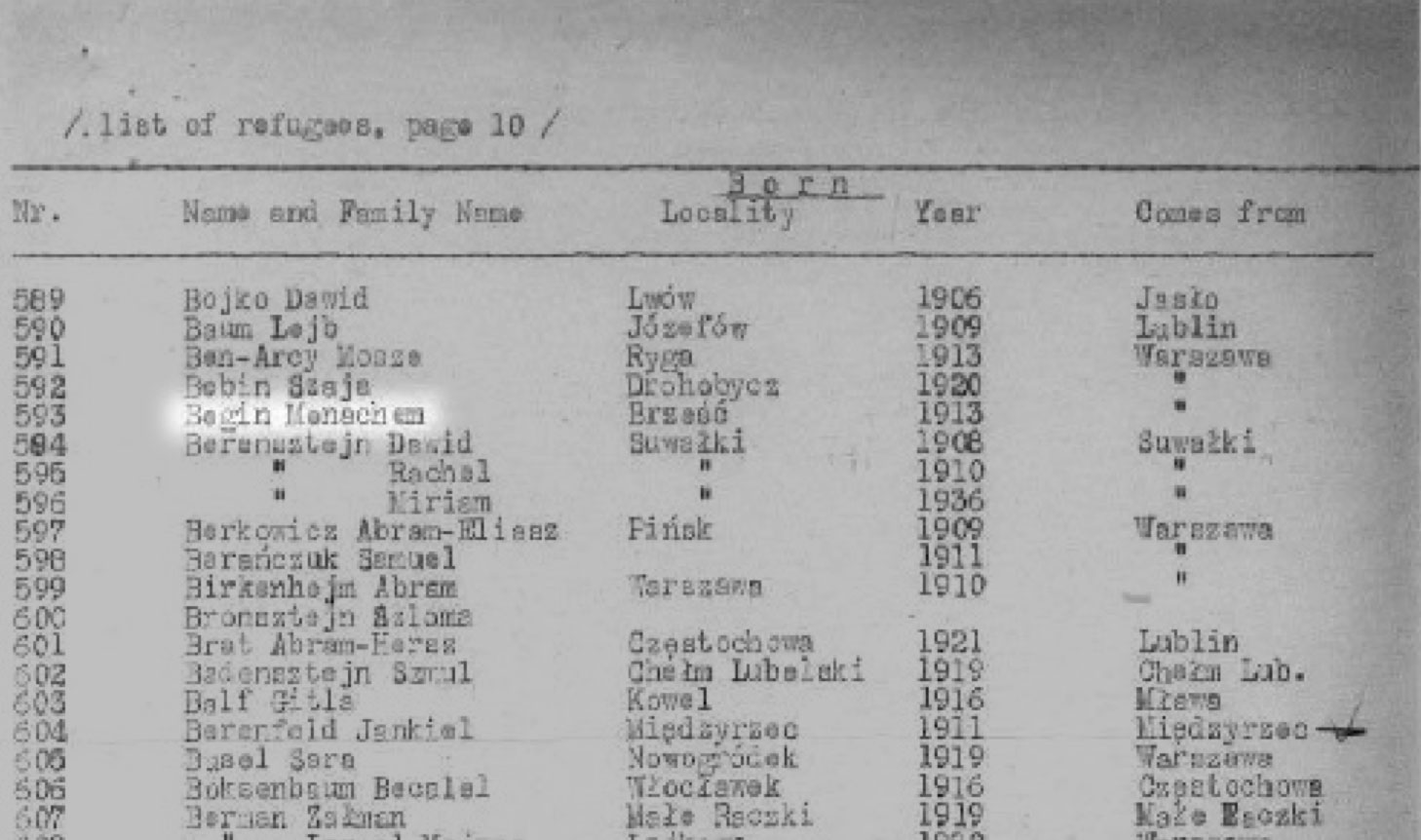
Page from a list of Polish Jewish refugees in Vilna receiving JDC aid, showing the name of Menachem Begin
The list includes 9,000 names of those who had fled eastward to Vilna, Lithuania, to escape the Nazi regime. Begin later fled to Palestine.
1940.
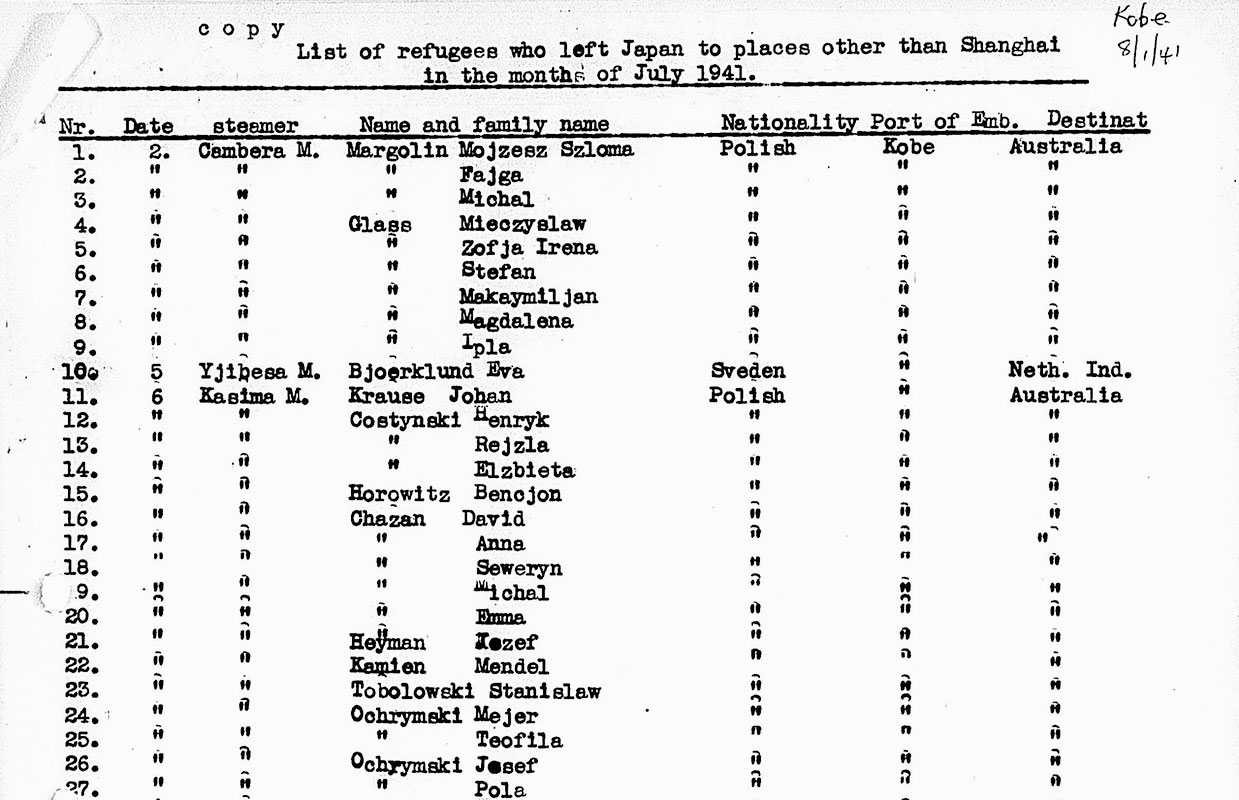
Page from a list of Jewish refugees who left Japan for other safe havens
Included are names, nationalities, dates, Japanese ports of departure and destinations. A Refugee Aid Committee was formed in Japan in 1939, with JDC migration offices opening in 1940.
1941.
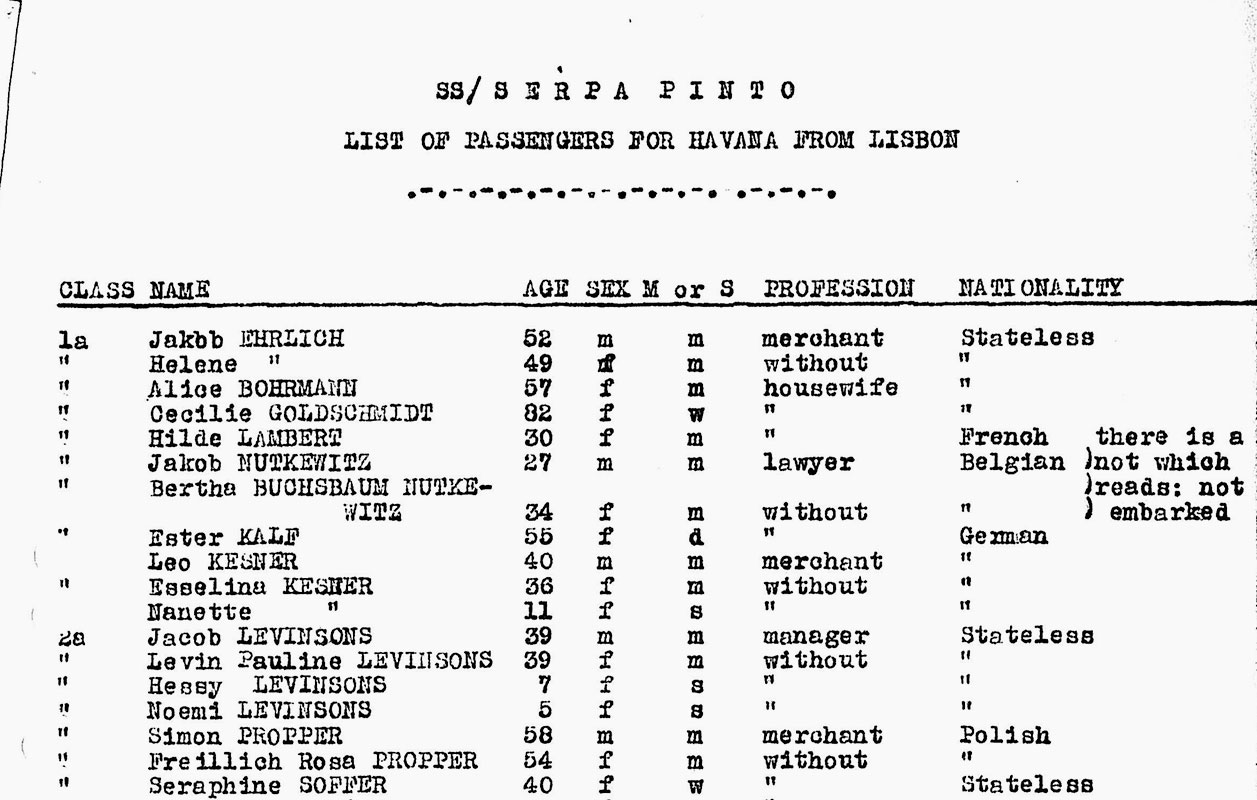
Page from a list of passengers on the SS Serpa Pinto traveling from Lisbon to Havana
In numerous sailings over the course of World War II, the SS Serpa Pinto bore more refugees across the Atlantic than any other ship. Departing from Lisbon, the ship’s destination was generally the United States, but other points of disembarkation included Cuba, the Dominican Republic, Jamaica, and Mexico. JDC financed or shared in the financing of these trips by purchasing tickets and providing guarantees, which enabled thousands of refugees to reach safety.
January 1942.
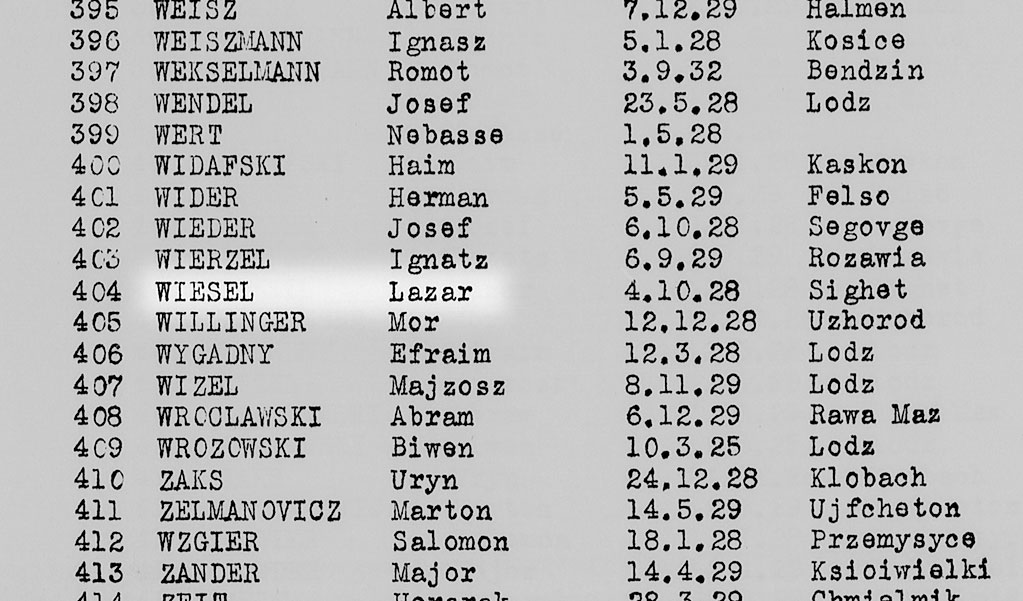
Page from a list of Jewish orphans from Buchenwald brought to France by JDC, showing the name of Elie Wiesel (Lazar Wiezen)
Joseph Schwartz, JDC’s Overseas Director, negotiated the entry of the 535 orphans named on this list into France and agreed to cover transportation costs.
1945.
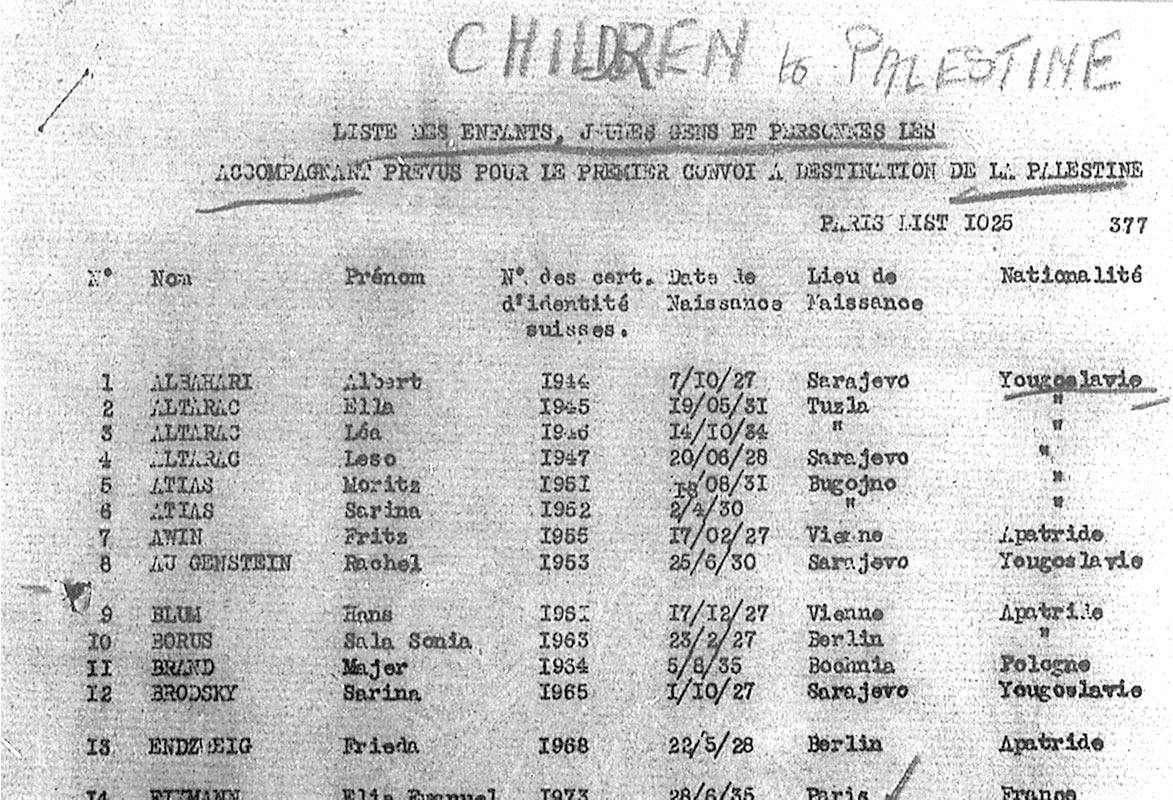
Page from a list of children on the first postwar convoy from France to Palestine
The list details children, young people, and accompanying adults who were scheduled to immigrate after the Holocaust with the help of JDC. A number of the children had been rendered stateless by the war. Key genealogical information such as name, birth date, birthplace, and nationality is noted.
1945.
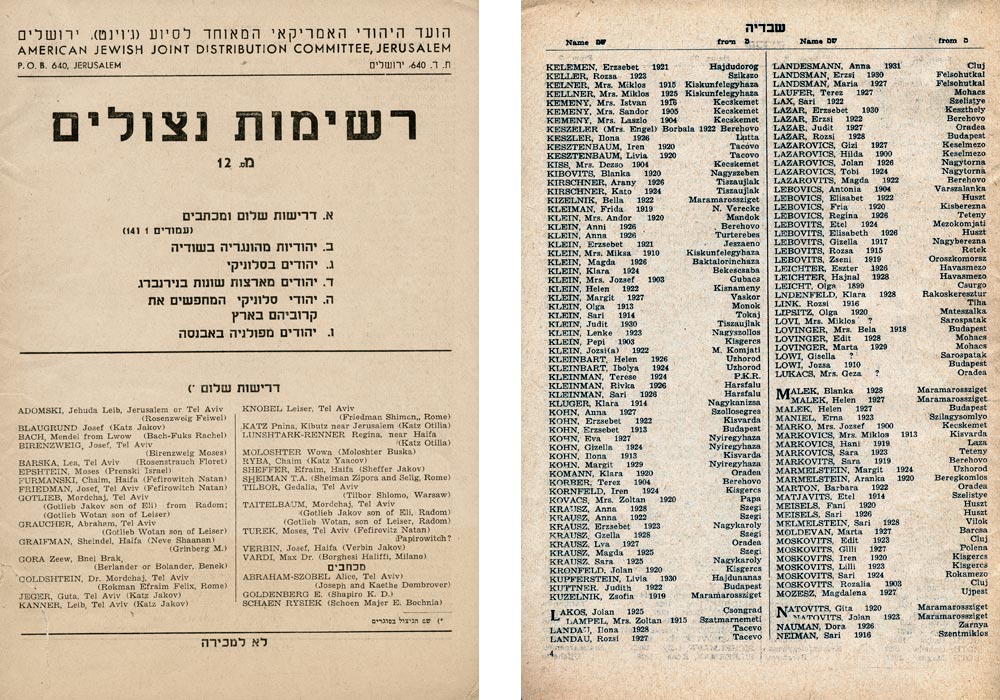
Cover and interior page of Reshimot Nitzolim (Lists of Survivors), Volume 12
In Jerusalem, JDC produced booklets with lists of Holocaust survivors and read the names daily on Kol Israel radio, reaching new immigrants who awaited word of living family members. This issue included Hungarian Jews in Sweden and Jews in Salonika (Thessaloniki) looking for relatives in Palestine.
Jerusalem, c.1945.
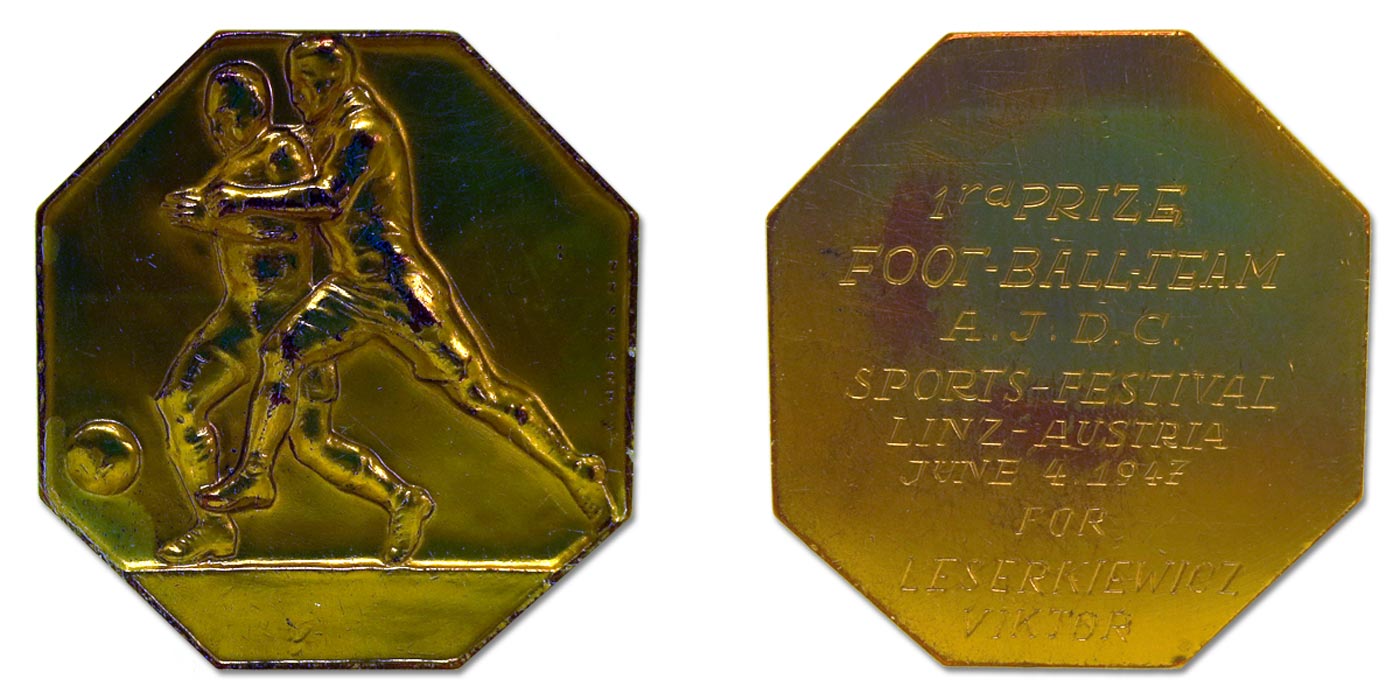
Soccer award from the Bad Ischl Displaced Persons camp
This medal was awarded to survivor and camp resident Wiktor Lezerkiewicz (Victor Lewis), who played in a JDC-financed intercamp league.
Austria, 1947.
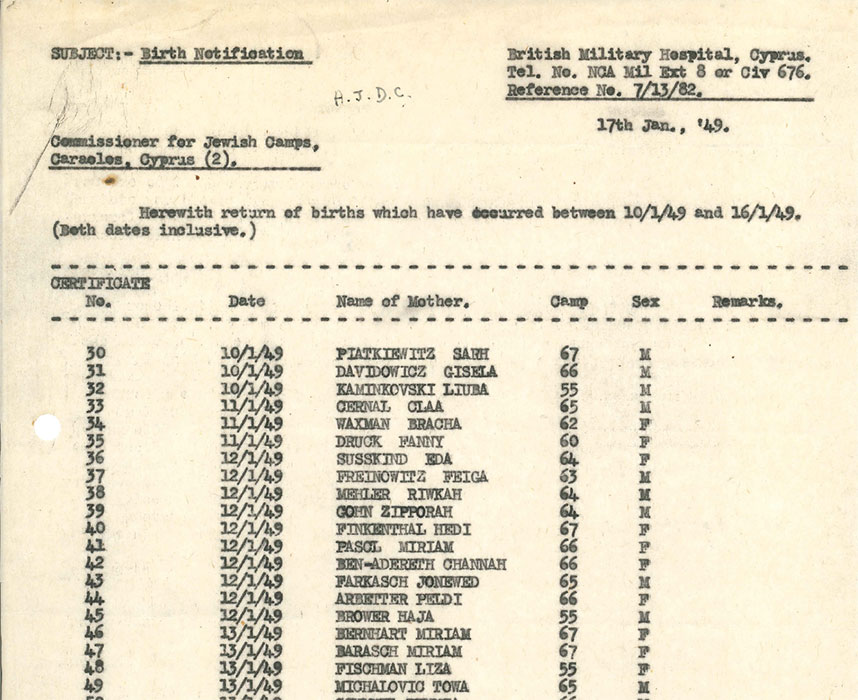
Page from a set of lists of births to Cyprus detainees
From 1946 until early 1949, the British confined over 53,000 Jewish refugees not permitted to enter Palestine, many of whom were Holocaust survivors, in detention camps on Cyprus. These weekly lists document babies born to residents of the camps during the period August 1948–February 1949, and record more than 500 births.
1948-1949.
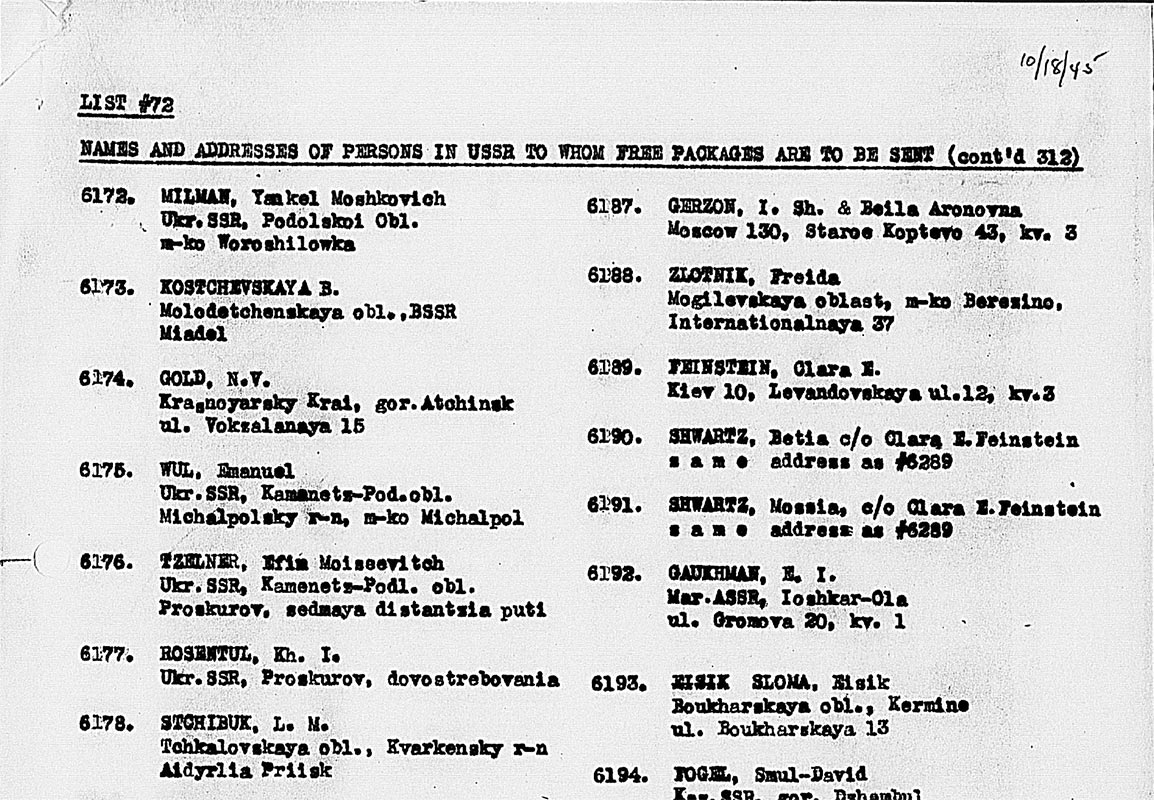
Page from lists of beneficiaries of JDC’s free parcel service in the Soviet Union
The lists include the names of refugees who had previously fled eastward to escape the Nazis.
1943-1945

Page from lists of passengers from the Yemenite airlift
Following Israel’s independence, JDC organized and financed Operation Magic Carpet, bringing Yemenite Jews to Israel. The lists include name, sex, birth year, weight, and family status.
1948-1950.
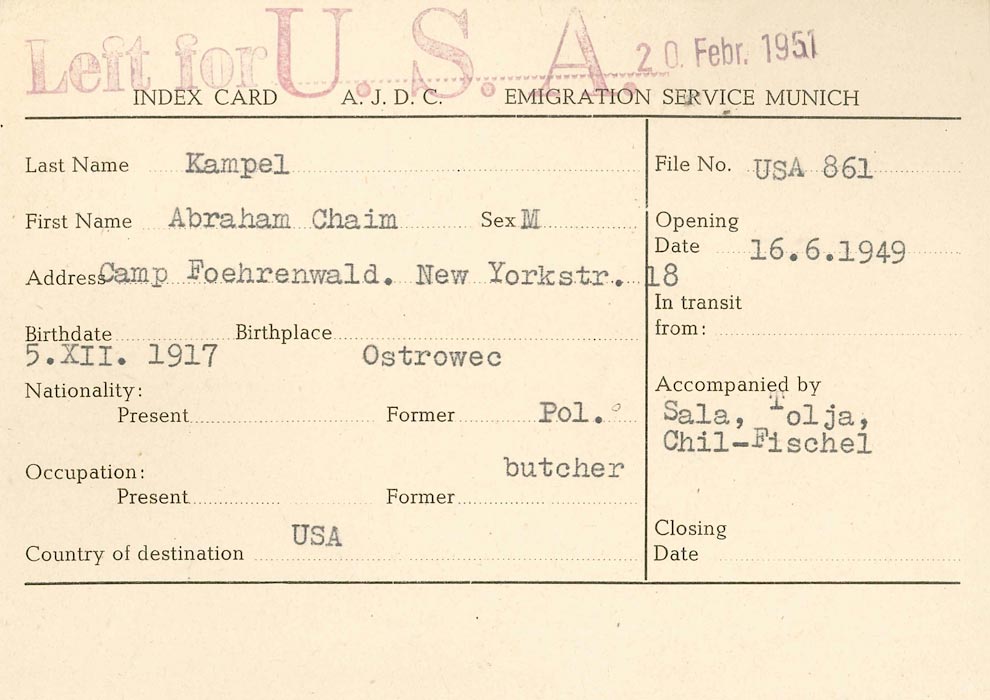
AJDC Munich Emigration Service index card for Abraham Chaim Kampel
From a collection of more than 76,000 cards of Jewish survivors who registered with the Emigration Department of JDC in Munich and Vienna after World War II for help in emigrating to countries other than Israel.
1951.
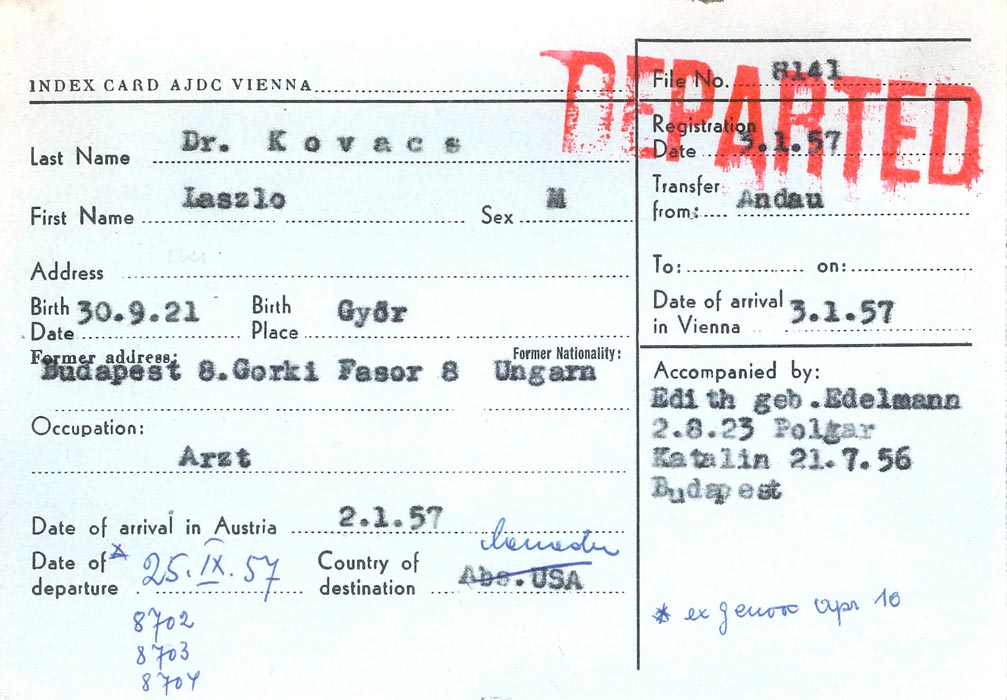
AJDC Vienna Hungarian Refugee Registration Card for Dr. Laszlo Kovacs
With the outbreak of the Hungarian Revolution in 1956, more than 18,000 Jews fled to Austria. JDC helped emigrants waiting for resettlement, providing housing, supporting kosher kitchens, and furnishing medical and religious supplies.
1957.
Everything Possible: JDC and the Children of the DP Camps
Following World War II, JDC provided critical services to European Jews in the displaced persons (DP) camps established by the Allied Armed Forces. JDC placed special attention on the unique needs of the growing population of children in the camps.
